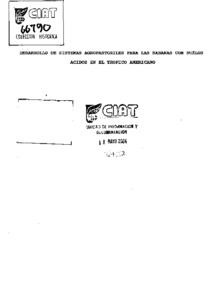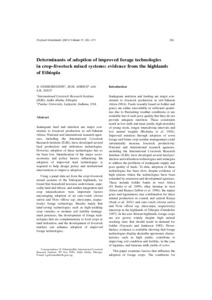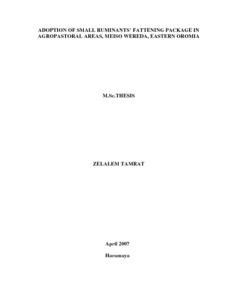Forage legumes for improved fallows in agropastoral systems of subhumid West Africa. II. Green manure production and decomposition after incorporation into the soil
A short-term improved fallow system based on forage legumes for enhancing crop and livestock components of mixed farming systems was tested in the subhumid zone of West Africa. As part of the evaluation, the ability of 11 legume species (Centrosema macrocarpum, C. pubescens, Stylosanthes guianensis, Pueraria phaseoloides, Mucuna pruriens, Zornia glabra, Dioclea guianensis, Arachis pintoi, Aeschynomene histrix, Calopogonium caeruleum, Flemingia macrophylla) to accumulate biomass and nitrogen after dry season harvest of herbage was assessed at 2 sites in south-west Nigeria.




